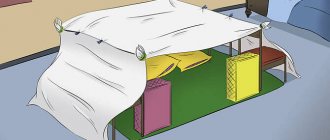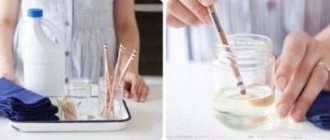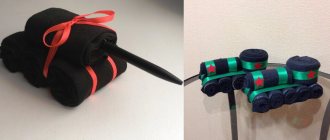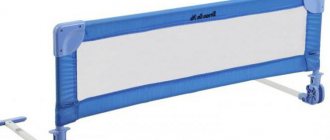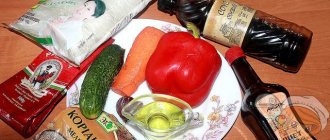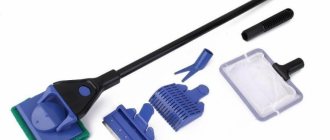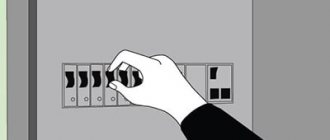To the teacher
The long-awaited summer has flown by. Soon the branches of the trees outside the windows will turn sadly black, and the gray low sky will be reflected in the drops of rain on them. And then the herbarium will help dispel the autumn blues and bring back memories of a bright sunny summer. Especially if this herbarium is made with your own hands. So don't waste time during these last warm autumn days.
You can collect a herbarium either independently or with children. After all, by participating in this process, the child becomes more familiar with the world around him and develops his powers of observation. In addition, the design of a herbarium contributes to the development of accuracy, composure, and the ability to work with literature. And for us, adults, communication with nature will help us plunge into childhood and restore peace of mind. So, how to make a herbarium?
How to collect a herbarium? To avoid disappointment, this should be done in dry weather. Wet plants become more fragile, which means they can easily crumble when creating a herbarium. We will need the following: a tool for digging up plants (a small shovel, a metal children's scoop or even a strong spoon), a herbarium folder - a kind of press for collected plants.
You can do it yourself. For example, Yulia Kasparova, in her article on the herbarium, advises folding two sheets of A3 cardboard, making holes in the corners, and threading thick laces or braid into them. The folder is ready. Place old newspapers inside into which you will place the neatly straightened plants.
You will also need a pen and paper to create temporary labels. A plant identification atlas can also be useful, especially if your knowledge of the plant world is limited.
Now you are ready to go on a “scientific expedition”, but first remember an important rule: collecting a herbarium should not turn into mindless destruction of nature.
How to design a herbarium? Do-it-yourself herbarium There are many ways to dry plants, we will look at the most common ones.
Method one. Drying plants in newspapers as mentioned above. Place the newspapers one on top of the other, cover them with paper napkins and weigh them down with something heavy. Change the wipes every few days. Be careful not to overdo it. Perhaps two secrets will be useful to you: you can dip the leaves in a solution of water and 20% PVA glue, then they will become denser; To ensure that blue and cyan flowers retain their color, immerse them briefly (no more than 1 minute) in denatured alcohol before drying.
Method two. Dry with an iron. The main thing here is not to overdo it, otherwise the plants will lose their natural color. We run the iron over the plant wrapped in paper a couple of times. After a few hours we repeat the procedure.
After the plants are dried, we prepare an album for the herbarium. We carefully attach the dried plant to A3 sheets of paper with narrow strips of paper. Glue is applied only to the ends of the strips. If the herbarium is properly designed, then in the lower right corner there should be a label in Russian and Latin, which contains the name of the plant, its location, information about the place and time of collection. Then the sheets are lined with parchment and collected in a folder.
To make it more interesting, the collections can be diversified: collect a separate herbarium from leaves, flowers or cereals. Of course, it is important to strictly adhere to all the above rules if, for example, we are preparing a herbarium for a school. A home herbarium can be embellished a little: make a frame, draw a suitable background. Over time, it’s easy to learn how to make crafts from a herbarium and learn how to create wonderful panels from it. Doing this together with other family members will help unite the family, and a warm summer will settle in your home for a long time.
Herbarium: collecting and arranging your favorite plants
Summer has always been famous for the richness of various herbs and flowers, so this is the best time to collect plants for the herbarium. You can collect your favorite plants anywhere and anytime. Then the herbs and flowers are dried in a special way, and then you can place them wherever your heart desires - in a special herbarium album or in a frame under glass. By the way, dried plants in a frame will be an excellent addition to your interior!
- We recommend collecting plants for your herbarium in dry weather, preferably after 11 a.m., this way there will be no dew on the plants, which causes dark spots to appear on the leaves.
- Choose only fresh and clean plants without damage. It is important that there are no signs of wilting.
- If you want to preserve the color of the plant after drying, then it should be taken at the very beginning of flowering.
Drying plants
The simplest and most traditional way of drying plants for a herbarium is to use a press. First you need to place the plant between the pages of a book, and then place it on a shelf between other books. But this method may spoil your book a little, since moisture from the plant can transfer to the pages of the book. Therefore, before placing the plant on the page, we advise you to place ordinary paper, preferably soft, between them.
There is another way: put all the plants on a couple of sheets of plain paper, cover it with another layer of paper, and carefully place any flat object or wooden board on top. But if among your plants there are flowers with delicate petals, then they should be dried separately from everyone else.
You can also make a press yourself that will serve you for a long time. To do this you will need two pieces of plywood, thick cardboard and screws.
Imagine that you are reading a magical book with photos that will make your soul freeze. Page after page takes you to unknown lands, tells a story about something wonderful and how beautifully this world works. Who is the author of this work? Nature. And the name of the masterpiece is “Herbarium of leaves with flowers.” Let's read this book together to understand why it was written? Who is it intended for? And for those who have a desire to try their hand at it and help the Author continue this grandiose work, we invite you to learn how to make a herbarium with your own hands.
Let's find out together: what a herbarium is and what its goals are; little secrets of the herbalist: suitable plants, what conditions for drying a particular plant, how to distribute the herbs; how to collect a herbarium and what are the rules for its design.
Drying leaves
The simplest method of drying in natural conditions is considered to be drying between the pages of a book. If the foliage was not wet and too juicy, this option is ideal.
In order not to spoil an expensive publication, first place a layer of paper between its sheets and the sample.
The collected specimens are placed to dry in one layer. They are aired daily and transferred to other sheets of the book to avoid mold. The top of the book can be pressed down with a press so that the samples do not bulge. After 5-10 days you can start creating a collection.
Related article: Crochet flower rug: step-by-step master class with diagrams and photos
The next common drying method involves using an iron. The collected samples are placed between two sheets of white paper and ironed at medium temperature. You need to be prepared for the fact that the exicate (dried sample) will lose its natural color.
About the herbarium
It is interesting that the first memories of a herbarium made by someone do not speak about the scientific purpose of the collection, but have romantic roots.
The thing is that in such an unusual way the lovers preserved signs of attention. They wanted to dry the beautiful flower given to them to remember their loved one. But in the 15th century, books about plants began to appear. Some of them were true, some were myths and legends. And it was not possible to take photographs then. Therefore, the production of the herbarium was carried out using more or less accurate drawings, from which it was sometimes difficult to identify a particular plant. But in the middle of the 16th century, scientific works suddenly began to appear with examples of glued dried plant parts.
The appearance of the botanical collection has remained virtually unchanged since then. But they began to collect it more often at home for children at school, and even for kindergarten. Why? Who needs it? And what is the purpose of such a collection?
How your herbalist will look depends directly on what your goals are for compiling a herbarium.
Classification:
- Special
. For example, a herbarium for an elementary school. - Systematic
. Any system is taken as a basis. For example, by genus or family, the same colors of a dried plant, or a collection in the order of letters in the alphabet. - Periodic
. Organized according to the periods in which the materials were collected. - Thematic
. Medicinal, cereals, weeds or from indoor flowers, etc. - Morphological
. When material of the same type with modified organs is dried. - Floral
. All plants of a certain region.
Unusual option
Sometimes the interesting task of compiling a collection of plants begins to be given to children much earlier. To make it interesting for your child to look at the herbarium for kindergarten, we suggest you decorate it using a very interesting technique - casts.
A cast of the sheet can be made on salt dough or plaster. In the first case, the dough is kneaded according to the basic recipe: mix fine salt and flour in equal proportions, carefully add water until a plastic mass is obtained.
Related article: Sunflower made of beads: master class with diagrams and video
Roll out small dough medallions. Press the leaves into them using a rolling pin with the side with the veins. Dry the dough, then remove the leaf and paint the surface of the print.
The second version of the cast is made of plaster. This technique is not that difficult, but the result will be a beautiful and durable picture. To make it, you will need:
- plastic bag;
- plastic plate;
- plasticine (can be old);
- gypsum, water;
- collected leaves;
- dye.
The process is very simple, the photo instructions will allow you to see it in detail.
Please note that the print should be positioned with the design facing you.
Pour in and leave until completely dry.
We take out the plasticine.
We paint and varnish.
Such a panel will take its rightful place in the interior and will become the real pride of the baby.
Suitable plants
- Herbarium leaves must be healthy and undamaged by insects.
- Carefully dig them out along with the roots; free the rhizome from the ground.
- You can make a high-quality and durable herbarium from leaves only if you collect them during the day in warm sunny weather.
- The sample must have blooming flowers, preferably fruits too.
- Don't limit yourself to just one sample. It is advisable to collect in reserve so that you can choose the best option for making an herbalist.
Necessary tools and materials for collecting material to make a herbarium of flowers: a spatula, a knife, an excursion folder (they can be made from two sheets of plywood/cardboard), newspaper “shirts” for drying, a label and a pen.
What to note on the label: name of the plant, name of the area and its designation (forest, field), date, who collected it (if there was a group trip, and if you collected it yourself or with your children, you don’t have to make such a note).
Herbarium design
According to the herbarization rules, the folder is placed on a horizontal surface, then the plant is placed in it, trying to preserve its natural shape. Excess leaves that interfere with planting can be carefully removed, but the petioles should remain in place of the removed leaves. A certain number of leaves and flowers are turned with the bottom side towards the observer.
The dried herbarium is prepared in a special cardboard folder. On one page you can place several plants of different shapes and sizes.
Lavender in the interior
Herbarium of leaves in the interior
Conditions for drying a particular plant
The collected roots, so that they dry faster, are cut lengthwise with a sharp knife.
Flat drying is the most common. The material dried in this way can be used for decorative appliqués and albums.
How to make a herbarium yourself using the flat drying method.
Step by Step Actions
- What you need to consider before drying flowers:
Plants are collected only in dry weather; — It is advisable to find a place away from the roadway; — The time to choose is when the air has warmed up; - Only a fresh plant is suitable, without any signs of wilting. - We choose a suitable book, such that our leaves can be placed freely on the page. Don't forget, if you don't want to ruin the book, and the plants dry out faster if you put them with clean paper on both sides.
- You need a press that will press the book. These may be other weighty printed publications.
Do you want your plants to dry quickly and reliably? Then it’s worth changing the paper every day for a week to clean and dry.
When the leaves dry, they release moisture, which is absorbed by the paper. If you do not change it, this will affect the quality and appearance of the material.
In the future, you can remove the plants from the book and store them in a dark place. Of course, losses are inevitable. But they can be reduced.
How long does it take to dry plants? A small amount of material will be ready in 2-3 weeks. For dense and voluminous ones, a month is needed.
In addition to the usual book, you can use a hot iron. How to dry them correctly? Lay the plant flat on a sheet of paper and cover it with another sheet. Press with an iron and then iron.
Interesting!
Blue/light blue flowers will not lose their brightness if placed in denatured alcohol for half a minute.
The density of the plant is achieved by letting it lie in a solution of PVA and water (4:1).
A solution of glycerin and water (60 degrees), 3:1, will preserve the shape of flowers. But at the same time, the solution makes the plants darker.
To dry the dandelion and prevent it from falling apart, it is picked when the box with umbrellas has opened slightly. Thread a wire through the stem and lower the dandelion head for 10 seconds. into boiling water.
The whole process takes just a couple of minutes if you use the microwave at the lowest power.
How to dry bulk material, for example, what to do with a flower bud? To do this, parts of trees or flowers are placed in boxes and covered with sand or silica gel. In this case, the buds should look down.
How to properly dry flowers for an outdoor herbarium? You need to do this in the shade. The flowers have their buds facing down. And the plants should not touch each other.
How to distribute herbs in an album
Making a herbarium begins with mastering the main rule: all plants are attached to the sheets of an album, and they are covered with tracing paper (there are special albums for herbariums that can be bought at a bookstore, in the stationery department).
To mount the material, you can use threads: white or green, paper straws and glue. But under no circumstances should you use plaster or tape.
How many plants should there be to make up a collection? What size the collection will be is up to you to decide. You can even compile many volumes.
If you don’t have a special album, you can make it yourself using regular album sheets and transparent files.
But in order to arrange everything beautifully, it is advisable that there be one type of plant on one sheet. If it is larger than the page, the material can be trimmed in several places.
Important! Each page must be signed.
How to make a herbarium with a child so that the baby will also find it interesting? You can decorate everything creatively by adding drawings.
See a few more ideas for creativity, perhaps this unusual design will inspire you to do something interesting and creative:
How to organize and organize a meeting
But that is not all.
Let's talk about how to design a herbarium not only for school, but also for decorative purposes. There are 2 options:
- First. Glue one plant in the middle onto a sheet of paper.
- Second. Select the size of cardboard to which to attach the flower arrangement with glue, taking into account the color scheme and shape of the material.
If we are talking about how to make a herbarium for school, the first option is suitable.
A herbarium is a collection of dried plants with signatures on the labels.
You can collect whole plants: with roots and flowers, or you can dry only the flowers or just the leaves. With preschoolers or junior schoolchildren, you can start with a simple leaf herbarium, and high school students can be offered more complex options with digging up the entire plant.
Herbarium method (pressing)
The herbarium method allows plants to dry flat. Dino has prepared a special detailed master class on how to do it right. See HERE.
It's simple. We take a thick book and put the plants in it, skipping a few pages. We put the book under the press and after a couple of days we transfer the material to dry pages so that mold does not form.
IMPORTANT! Take a book that you don't mind spoiling, because... the pages will become stained with plant sap and subsequently become wrinkled from moisture. If you go for a walk, take the transport book with you, so the plants will not wither or become wrinkled. At home, you can place them in another book or under a special press for final drying.
In order for the plants to completely dry, it may take from 2 to 4 weeks, it all depends on the thickness of the stems and buds, and on the presence of moisture. In the future, it is convenient to store them in a dry place in books, sorted by type. If you put them in boxes, then over time they may wrinkle, reacting to the humidity in the apartment.
There are also faster ways to dry plants for a herbarium - using an iron or microwave. They should be used in rare cases when you need to save time. The main thing is not to overdry the material, otherwise it will become brittle and brittle and lose color. When drying with an iron, be sure to iron through the paper.
We collect
- It is necessary to collect plants and leaves for the herbarium in dry weather. If you collect leaves that are wet from rain or dew, they will take a long time to dry and break easily during processing.
- If you want to dig up the entire plant, you will need a small shovel, hoe or knife.
- Take care of the bag or bag in which you will put the plants. You can take with you a folder with files where the child will put leaves and flowers, and sticky notes to mark on them where you collected these plants and what they are called.
- Plants brought home must be carefully cleared of soil, the leaves and inflorescences straightened and prepared for drying.
Storing and caring for herbariums
Since dried plants are very hygroscopic, their first enemy is moisture. In dampness they instantly deteriorate. The herbarium can only be stored in a dry room, in closed albums or folders. To protect valuable collections from insect attacks, they are periodically treated with insecticides.
To preserve a collection of dry plants for as long as possible, it must be handled with care. Fragile specimens react negatively to even the slightest external influence (increased temperature, humidity, shaking, etc.). Special techniques have been developed for handling valuable historical herbarium collections, which are indicated on the title page of each collection.
Every collector is simply obliged to label all plants. The stock of dry wood that has not yet been pasted or used for decoration should be stored in special folders with lined sheets or in stacks of paper.
Drying
- It is best to dry plants under a press - a clever device for smoothing and drying leaves and flowers can be purchased in specialized stores.
- A book or iron can also be used as a press.
- If you fold leaves inside a book the old-fashioned way, line them with tracing paper or paper - otherwise they may leave stains on the book pages.
- If you iron the leaves, iron them on both sides and through newspaper. This method is the most dangerous, because if you overexpose the leaf under the iron, it will change color or shrink, so rare plant specimens should not be dried using this method.
- Plants with leaves and fruits can be collected in bunches and hung to dry on a clothesline.
We formalize
- Collected plants, flowers or leaves can be placed on A4 sheets. To do this, they need to be carefully “planted” on glue (a few drops are enough) or secured with thin strips of tracing paper or paper, intercepting the plant sample in several places.
- If individual shoots of a plant extend beyond the boundaries of the leaf, they can be carefully bent.
- It is convenient to collect sheets with glued plants into an album - it is most convenient to use transparent files and a folder with a binder.
Several design options:
Herbarium in a photo album
A convenient option for decorating a herbarium is a photo album. Small leaves and flowers can be glued onto 10 x 15 paper and placed in photo pockets. Such a mini-album with leaves of trees will look especially impressive: birch, aspen, oak, maple, ash.
If you don't want to glue anything, buy a photo album in which the photos need to be placed under the film and instead of pictures, place leaves and labels with signatures there.
Herbarium-clamshell
Sheets with plants glued to them can be laid out in a row and fastened together in the form of a folding book. When unfolded, such a herbarium will look like a long ribbon, and when folded, it will be no different from a standard herbarium folder.
Flower-leaf composition
This unconventional type of herbarium will allow you to place different leaves and flowers on one sheet of paper and create an original composition from them. A child can show his imagination and paint some of the leaves in other colors or add missing buds or fruits to the leaf using watercolors.
How to use dried samples
After the most difficult stages of preparing the herbarium have been completed, you can begin to create original interior decorations and make beautiful crafts. Rare specimens can be added to the collection or put aside for storage until the right moment. There are many interesting ideas for using dried plants for practical and aesthetic benefits.
Creating an Album
A special album for samples can be used as a place to store them or to display collection vegetation. You can purchase a ready-made special-purpose product in a store or make it yourself. Absolutely any design - with the ability to group by color, type, size. Plants can be firmly attached or temporarily fixed.
A good herbarium album can only be made of paper. Natural materials will be better preserved if they come into contact only with tracing paper and cardboard. There can be one instance or a group on one page. If a herbarium is being created for future use, specimens can be placed in transparent files and collected in a binder.
Creation of paintings and panels
Flat wall or floor decor is one of the simplest interior decorations. A panel of dried herbs or flowers can be of any size, represent a rare single specimen or various compositions. Small paintings of yellow leaves are made in schools with the onset of autumn.
To create a flat craft, you will need a wooden photo frame, a sheet of paper, two identical A4-sized glasses and strong adhesive. We cover one glass with a white sheet and arrange the plants on it according to the planned pattern. It is easier to lay out from the middle of the sheet, gradually moving towards the edges. We cover the plants with a second glass and place them in a frame, having previously coated the edges with glue.
Postcard design
A handmade postcard made from natural materials will be the best gift. You can use voluminous flowers or flat leaves as decoration. We select a suitable size and color of cardboard and place the dried blanks on it. They must be secured with glue. To prevent the leaves from falling and becoming deformed, we cover them with self-adhesive film for books. The top layer of the card should be pressed and ironed well with the handle of scissors, getting rid of voids. We cut off the excess film around the edges.
A gift card does not have to have standard sizes. As a base, you can use a regular sheet of paper or a thin strip of bookmark. You can design it in landscape or book form, with the addition of a drawing.
Making decorative wreaths
Original interior decoration does not have to be timed to coincide with a specific holiday. This beautiful craft can be hung on a door or wall at any time. Herbarium collected in summer and autumn is used as the main parts. Properly dried samples can be attached to the ring at any time of the year.
To create an autumn wreath from dry material, you will need to stock up on a large number of bright flowers and leaves. For the frame you will need wire, thread, and cling film. Bows, beads, butterflies and other small items are suitable as additional decor. You can make a natural wreath quickly and correctly if you follow the following instructions:
- Preparing the foundation. We twist the wire into a ring several times. At this stage, it is necessary to provide a loop for hanging the finished product.
- We divide the herbariums into bouquets and attach them to the frame.
- Cut a 5 cm roll from a roll of cling film.
- We wrap dry plants one by one with film to the base, trying to add volume to the product.
If the dry preparations have lost color during storage or there simply are not enough of the necessary types for the craft, the finished wreath can be coated with paint of any color from a spray bottle.
Compositions: rules for composing from dried flowers
Plants that have an attractive appearance after drying are intentionally grown by many summer residents. They can remain on the site all winter for decorative purposes or can be picked green and dried to create stunning 3D arrangements. More often they plant lunaria, immortelle, heathers, haretail and others.
To create a composition of dried flowers you will need a low and wide pot. The container does not have to have holes at the bottom; it serves a purely decorative function. To make the plants last longer and not crumble, place a floral sponge at the bottom of the vase. Using scissors, we give the foam flora the required shape and insert plant stems into it. The design of the composition must follow the following rules:
- The largest elements should be placed first according to the plan. It's better to place them in the center.
- We distribute dried flowers of the original shape, color, or the smallest quantity, evenly.
- Insert vertical elements. The best place for spike-shaped plants is next to the most inexpressive flowers.
- Along the edges of the composition we place bushy branches, for example, heather.
- The remaining voids should be decorated with low, small plants.
Let's sign
We use small labels to label plants. Have the child write down all the information he knows about the plant on a separate piece of paper and place the label in the lower right corner of the herbarium sheet.
What is usually written on the herbarium label? The name of the plant and the family to which it belongs, information about the place and time of collection of the plant.
If you have identified the species and family, feel free to indicate them on the label. Captions can be varied: if you know the medicinal properties of a given plant or some interesting facts about it, feel free to add them to the signature. Official botany does not welcome this, but entertaining - yes!
- Buy your child a beautiful illustrated encyclopedia in which he can independently search for the names of plants and shrubs whose leaves and flowers he collected.
- Set aside some of the collected natural materials “in reserve”: dried leaves, cones, acorns, twigs and tree bark will be needed during labor lessons or on winter evenings for making crafts.
- Compiling a herbarium is not only “desk” work, but also walks through the autumn forest and an opportunity to communicate with nature. In the matter of collecting and compiling a herbarium, the main thing is not the result, but the process, so go hunting for leaves with an empty bag and a good mood!
A child’s collection of plants for a herbarium and subsequent drying and systematization operations is an excellent opportunity for productive communication between children and parents, when a walk in the park or forest turns into an exciting journey of knowledge. Older children and adults who dry the herbarium themselves also receive many positive emotions, and the knowledge gained in this way remains in their memory for a long time.
What is a herbarium?
In simple terms, a herbarium is a collection of dried plants. The first mention of herbarium collection dates back to the 16th century, when paper began to be used for collecting and drying plants as a material that absorbs moisture from plants well. And today in stores you can find suitable tools for collecting herbarium: paper for gluing samples, labels, newsprint or napkins for drying plants, folders, many types of glue, presses, etc.
The collection of herbariums is carried out by employees of various institutions: botanical gardens, institutes of botany and natural history. The largest collections of plants, numbering thousands of specimens, are located in different parts of the world: in the National Museum of Natural History, the New York Botanical Garden, the Botanical Institute. V.L. Komarova RAS, the Royal Botanical Gardens Kew have more than 7 million herbarium sheets. For scientific purposes, the collection, design and systematization of the herbarium is approached professionally: there are many rules that cannot be deviated from.
To collect a herbarium for yourself or for educational purposes at school, it is not necessary to follow all these scientific canons, but some rules will greatly simplify this work.
How to collect a herbarium?
Herbarium collection is divided into three stages:
- searching and collecting plants;
- drying of plants;
- systematization of plants, search for information and design of the herbarium.
Of course, you can collect plants spontaneously: for example, after seeing a beautiful specimen, or you can stick to a certain theme. For example, in botany or the natural world lessons, teachers can assign a summer assignment to collect herbariums on the following topics:
- weeds;
- healing herbs;
- poisonous plants;
- flowers/flowering plants (field, garden);
- houseplants;
- various forms of inflorescences;
- Asteraceae;
- and any other classifications.
Much attention should be paid to collecting plants for the herbarium: this largely determines whether it will be possible to make it and whether the herbarium will be of interest.
What is a herbarium for?
Children love collecting herbariums. Teach them to do it right. At the same time, you can repeat the names of plants, compare the shape of leaves and flowers in different specimens, find similarities and differences, talk about how the plant has adapted to the place where it grows, what helps it survive and obtain the required amount of moisture, how it reproduces, when the seeds ripen, etc. The information that a child can receive while collecting plants for a herbarium will be remembered much faster than that read in a textbook.
Dried plants can be used for crafts, panels, appliques, or simply stored in albums with signatures and notes as a keepsake.
Identical plants can be glued onto cards and made into a board game, lotto, etc. Among other things, creating a herbarium is a great way to preserve memories of warm days.
Dear readers! Did you collect a herbarium as a child? Do you do herbariums with your children now? What do you use the dried leaves for? We are waiting for your answers in the comments.
Rules for collecting plants for herbarium
- Plants are collected in dry weather; specimens that are not wetted by rain and dew are selected, otherwise it will be very difficult to dry them.
- The plant is collected as a whole, with all roots, rhizomes, tubers, bulbs, fruits and flowers, incl. aquatic plants.
- If the plant is large and it is not possible to collect it entirely, then those parts of the plant are taken by which it can be identified, identified, and get an idea of the whole plant.
- The branches of trees and bushes are not broken off, but cut off with a knife.
- The leaves of trees and shrubs are cut off along with the branches so that the arrangement of the leaves can be seen.
- Only developed plants with flowers (even immature) and fruits are selected for the herbarium.
- Plants are collected without damage or signs of disease and have not dried out from the heat.
- For dioecious plants, both male and female specimens are collected, and for monoecious plants, both specimens with pistillate and staminate flowers are collected.
- For each plant, several copies are taken in reserve.
Diseased plants should not be collected for herbarium
The dug up plant is immediately thoroughly cleaned of soil, adhering dirt and other plants and placed in a pocket between two sheets of paper. Immediately the plant straightens out in the same way as it grew:
- if the leaves lie one on top of the other, then a layer of paper is placed between them;
- one or two sheets are placed wrong side up to have an idea of both sides of the sheet;
- if the plant has large fruits or flowers, then you need to put cotton wool under them so that there is no breakage or damage when carried;
- if the plant is too long and does not fit on the sheet, then it needs to be folded in a zigzag, but at the same time there should be roots of the plant at the bottom, and the top should be facing up.
According to the rules, you need to include a label indicating the date the plant was collected, who collected it, as well as a description of the area:
- name of the locality or coordinates (can be viewed on mobile devices),
- relief,
- growing conditions: degree of illumination, humidity, side of the world to which the flower or leaves are facing, the density with which this plant occurs in the area, etc.
You can take photographs of the plant and its location.
To collect plants, it is best to make a special portable press, which consists of two chipboard plywood with holes drilled for ventilation, which can be tied together with twine or special laces. Sheets of paper that absorbs moisture well, for example, newspaper or writing paper, blotter paper, cosmetic wipes, etc., are placed inside this press. The dug up plant is placed between two such sheets, and additional sheets are placed between each plant so that the plants do not break each other.
After collecting samples at home, you need to start drying the herbarium. Drying is no less important than harvesting plants, because if they are not dried properly, the plants may not dry out, turn black, break off, rot, etc.
How to dry a herbarium?
Nowadays, parents even use microwave ovens to dry the herbarium, but it is better to dry the herbarium in its natural environment: in a press outdoors in the wind, in the sun, putting it indoors at night, or ironing it
through gauze or paper.
To dry the plants, you can use an already prepared press
: sheets of paper in which the plant lies, the so-called. The pockets, without turning them over, are stacked one on top of the other, having previously placed additional sheets between them - in fact, everything is like when collecting plants. But when drying, you need to change sheets of paper daily for new ones, because... the old ones become damp.
Large and voluminous plants, incl. flowers, can be dried in sand
. To do this, river or sea sand must be freed from all impurities: it is washed until the water is perfectly clear, and then hardened in an oven on metal baking sheets.
Of course, you can approach drying plants even easier by placing them between the sheets of a book
, but then, firstly, the book may deteriorate, and secondly, the dried plant may not retain its shape.
To find out whether the plant has dried, it is carefully lifted by the stem and, if it does not bend, it can already be drawn up on a herbarium sheet.

